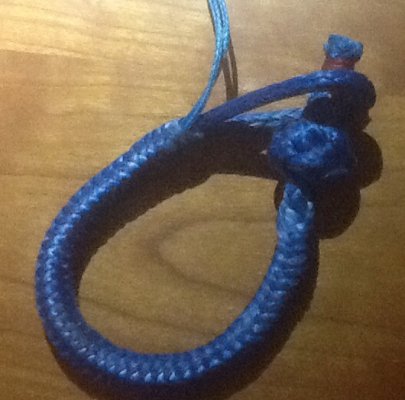psneeld
Guru
It looks to me from the photo that you need to tie a knot every time you use the Dyneema "chain hook." Is that correct? Then to remove it you need to untie the knot?
I made a dinghy lifting bridle of Dyneema for a friend. Lightweight and soft. He used it twice, then replaced it with SS wire rope. He (and me too) couldn't wrap his head around the fact that Dyneema is that kind of strong. I know it is, but it seems impossible.
Howard
no...the little loop is like a slip knot you can pull the knotted end through..




